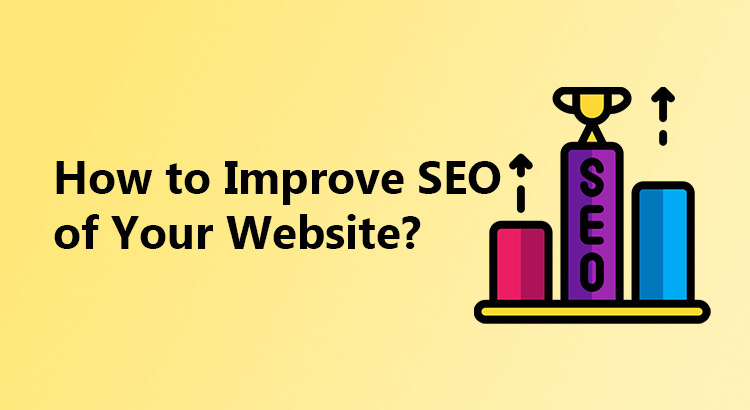Have you ever wondered how to improve the SEO of your website? In a competitive market, securing a prominent position in search engine results is crucial for business success. This article explores strategic and continuous SEO efforts aimed at enhancing website visibility and relevance, ultimately driving growth and success.
Related Article: SEO Best Practices: A Comprehensive Guide for Success
How to Improve SEO of Your Website?
Here are the ways to improve search engine optimization rankings of your business website.
1. Publish Quality Content
Creating high-quality, industry-relevant content not only boosts search rankings but also engages visitors, providing crucial information about your products/services.
Regular updates attract more backlinks and expand keyword reach, maximizing online visibility. Use tools like Google Search Console to track content performance effectively.
Related Article: Content Quality vs. Quantity: Striking the Right Balance
2. Enhance Site Speed
Optimizing site speed is vital for SEO success, reducing bounce rates and enhancing indexation. Even a one-second improvement can significantly boost conversions.
Google Search Console identifies slow-loading URLs, while page speed optimization services ensure top-notch performance, driving higher rankings and conversions.
Useful Article: How Important Is Page Speed for SEO?
3. Optimize Images
Image optimization, including descriptive alt text, signals relevance to search engines, aiding in higher rankings for related keywords.
Alt text provides crucial context for search crawlers, enhancing understanding and ranking of page content. Tools like Screaming Frog or Ahrefs expedite identification of images requiring alt text.
4. Strategic Keyword Placement
Strategically placing keywords in URLs, page titles, headings, and content signals relevance to search engines, boosting visibility for related searches.
However, avoid keyword stuffing, as it can harm SEO and result in penalties. Opt for natural integration for optimal results.
Learn More: SEO Keyword Strategy Mastery: Elevate Your Digital Presence
5. Streamline Site Structure and Navigation
Optimizing your site structure and navigation is essential for SEO success. A clear, intuitive structure enhances user experience, reducing bounce rates and improving dwell times.
This positive user behavior sends strong signals to search engines, leading to higher rankings. Simple navigation aids search crawlers in indexing pages effectively, further enhancing visibility in search results.
6. Mobile Optimization
Optimizing your website for mobile is crucial with Google’s shift to a mobile-first index. Ensure mobile-friendliness using tools like Google’s Mobile-Friendly Test.
Neglecting mobile optimization can lead to lower rankings, even on desktops. Responsive design is essential for maintaining rankings, attracting customers, and driving revenue.

7. Regular Updates
Regularly updating your website is essential for maintaining search rankings and generating leads. SEO requires continuous optimization; staying up-to-date to evolving internet trends and technology ensures your site remains competitive.
Consistent maintenance is key to sustaining top-ranking positions in search results. This is why most business owners prefer working with an SEO company.
8. Refresh Older Content
Refreshing older content is essential to maintain its relevance and ensure it remains valuable to your audience. Here are some effective strategies for updating your content:
- Ensure that the intent of your content aligns with current search trends by analyzing search engine results pages (SERPs).
- Keep your content accurate and reliable by incorporating the latest statistics and data relevant to your topic.
- Signal freshness to search engines by adjusting the publication date of your older content.
- Maintain the integrity of your content by regularly checking for and fixing any broken links within it.
By implementing a content refresh strategy, you can breathe new life into older pieces of content, demonstrating to search engines like Google that your website is consistently updated and remains relevant to your audience.
9. Optimize Meta Information
Optimizing title tags, meta descriptions, and meta tags is crucial for SEO success. These backend elements affect your site’s rankings, making it easier for search engines to understand your page’s content.
By incorporating relevant keywords into these elements, you can help Google determine what your page is about. Be sure that all pages have updated meta information to overhaul your site’s rankings.
Related Article: The Importance of Meta Tags in SEO
10. Earn Backlinks
Earning backlinks from reputable sites is crucial for improving search rankings. Avoid paying for links, as it violates Google’s guidelines. Instead, focus on creating valuable content that encourages other sites to link to yours.
Building relationships with industry reporters, bloggers, and influencers can also enhance your link-building efforts.
11. Internal Linking
Internal linking guides users seamlessly across your site while also informing search engines about your content’s relevance and connections.
Clear and descriptive anchor text is essential for effective internal linking, ensuring it complements your keyword strategy without overshadowing it.
12. Use Alt Text
Utilize alt text to provide descriptions for images in HTML, aiding users when images fail to load and helping Google understand your content.
This enhances user experience and ensures accessibility, crucial for effective SEO. Ensure all images have alt text for improved usability and search engine optimization.
13. Target Low-Competition Keywords
To maximize audience reach, prioritize low-competition keywords with high search volume. Identify related terms reflecting your site’s focus to inform Google effectively.
Utilizing these terms will elevate your rankings and expand user engagement opportunities.
14. Develop Local SEO Strategy
Focus on local SEO if your business serves specific communities or operates in multiple locations with unique services.
Prioritize updating your Google Business Profile to clarify your service area, ensuring potential customers have access to relevant information about your business, including location, hours, services, products, and contact details.
15. Optimize for Featured Snippets
Optimize your content for featured snippets, which are displayed at the top of search engine results pages (SERPs).
This strategy enhances user experience by providing quick access to information, increasing the likelihood of users clicking on your page. To optimize for featured snippets:
- Structure your content with questions as H2 headings, followed by immediate answers.
- Utilize lists for step-by-step processes, facilitating easy extraction by Google.
- Maintain concise and direct answers to enhance visibility and relevance in SERPs.
16. Improve User Experience (UX)
Improving user experience (UX) is crucial for SEO success. Search engines prioritize sites that offer relevant, helpful information and positive UX.
This encompasses factors like usability, functionality, and design. Enhancing UX leads to increased dwell time, signaling relevance to Google. Invest in design and usability to maintain high search rankings.
17. Fix Broken Links
Identifying and resolving broken links is essential for maintaining your website’s integrity and optimizing its SEO performance. Broken links are links that:
- Redirect repeatedly
- Point to a page that no longer exists
- Contain typos or errors, rendering them inactive
To address broken links effectively, leverage Google’s Search Console. Access the “Crawl > Crawl Errors” section and choose “Not Found.” This allows you to locate and rectify all broken links across your website.
18. Fill Content Gaps
To address content gaps, you must identify areas where user inquiries remain unanswered. When there’s a content gap, it implies users are seeking information but not finding satisfactory responses.
To bridge these gaps, analyze SERPs for missing content and create relevant material. This strategy ensures your content ranks prominently and meets user needs swiftly. Identify content gaps by:
- Reviewing competitor keywords
- Identifying absent questions in search results
- Assessing deficiencies in existing content
Additionally, examine your own site to address any internal content gaps.
19. Monitor SEO Performance
To monitor SEO performance effectively, utilize Google Analytics. Google Analytics 4 (GA4) is a free tool providing automated reporting on SEO campaigns.
Customize reports to monitor relevant metrics and make informed adjustments to campaigns, focusing on channels driving the most traffic.
Conclusion of How to Increase SEO Rankings of Your Website
If you want to know how to improve the SEO of your website, remember that it’s a complex task. From content creation to technical optimization and user experience enhancement, every aspect is important. By implementing the strategies outlined in this guide, you can enhance your website’s SEO ranking.


